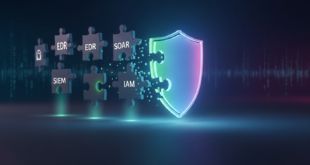Introduction
In today’s increasingly connected world, smart devices have become an integral part of our daily lives. From smart thermostats to fitness trackers and even smart refrigerators, these devices promise convenience, efficiency, and enhanced living experiences. However, as our reliance on these gadgets grows, so does the potential for cyber threats and vulnerabilities. To address these concerns and empower consumers, cybersecurity labeling for smart devices has emerged as a critical concept. In this article, we’ll delve into the importance of cybersecurity labeling and how it can shape the future of smart device security.
The Growing Threat Landscape
As smart devices continue to infiltrate our homes and workplaces, they bring along a host of benefits. Yet, they also introduce new vulnerabilities. The interconnected nature of these devices creates a sprawling attack surface that cybercriminals can exploit. From data breaches and identity theft to unauthorized access to critical infrastructure, the potential risks are diverse and serious.
The Rise of IoT Threats: Securing Connected Devices and Networks
To mitigate these threats, manufacturers, regulatory bodies, and consumers must collectively work towards enhancing the security of smart devices. One promising approach to achieving this is through cybersecurity labeling.
Understanding Cybersecurity Labeling
Cybersecurity labeling, also known as security rating or certification, involves the evaluation and categorization of a device’s security features. This label, often displayed prominently on the packaging or the device itself, provides consumers with valuable information about the product’s security capabilities.
Smart Home Security: Protecting Your Digital Privacy
Key Elements of Cybersecurity Labeling:
- Security Standards Compliance: Devices are evaluated against recognized cybersecurity standards and guidelines, such as ISO 27001, NIST Cybersecurity Framework, or specific industry standards.
- Vulnerability Assessment: Devices undergo thorough vulnerability assessments to identify and address potential weaknesses or flaws.
- Encryption: The presence and strength of encryption protocols are assessed to ensure data confidentiality.
- Regular Updates: Devices should receive regular security updates and patches to address known vulnerabilities.
- Secure Authentication: Strong user authentication mechanisms, such as biometrics or two-factor authentication, are evaluated.
- Data Privacy: The device’s data handling practices, including data collection, storage, and sharing, are examined to protect users’ privacy.
The Benefits of Cybersecurity Labeling
- Informed Consumer Choices: Cybersecurity labels empower consumers to make informed purchasing decisions. They can choose devices with better security ratings, leading to safer digital experiences.
- Competitive Advantage: Manufacturers who invest in cybersecurity and receive favorable labels can use this as a competitive advantage to gain consumer trust.
- Standardization: Cybersecurity labeling encourages the standardization of security practices across the industry, raising the overall level of security in smart devices.
- Accountability: Manufacturers are held accountable for the security of their products. This can lead to improved product development processes and security features.
- Regulatory Compliance: Cybersecurity labeling can align with regulatory requirements, simplifying compliance for manufacturers.
U.S. Cyber Trust Mark program
In March 2023, the White House launched its national cyber strategy that called on software makers and companies to take far greater responsibility to ensure that their systems cannot be hacked. It also accelerated efforts by agencies such as the Federal Bureau of Investigation and the Defense Department to disrupt the activities of hackers and ransomware groups around the world.
The Biden-Harris Administration has launched a cybersecurity labeling initiative for smart devices in the United States to enhance consumer protection against cyberattacks. Retailers and manufacturers will apply a “U.S. Cyber Trust Mark” logo to their devices and the program will be up and running in 2024. This program, known as the “U.S. Cyber Trust Mark,” aims to raise cybersecurity standards for common smart devices like refrigerators, microwaves, televisions, climate control systems, and fitness trackers.
Key points of the U.S. Cyber Trust Mark program:
- Voluntary Commitments: Leading electronics, appliance, and consumer product manufacturers, as well as retailers, have voluntarily committed to increasing cybersecurity for the products they sell. Participants include Amazon, Best Buy, Google, LG Electronics U.S.A., Logitech, and Samsung Electronics.
- Distinct Shield Logo: Products that meet established cybersecurity criteria will feature a “U.S. Cyber Trust Mark” logo, providing consumers with a visible indicator of enhanced security.
- FCC Involvement: The Federal Communications Commission (FCC) will oversee the program and is expected to seek public input for its implementation, with the program becoming operational in 2024. The FCC will collaborate with stakeholders to certify and label products based on cybersecurity criteria from the National Institute of Standards and Technology (NIST).
- Transparency and Comparison: The program will use QR codes linking to a national registry of certified devices, offering consumers specific and comparable security information about these smart products. Oversight and enforcement safeguards will be established to maintain trust and confidence.
- Expanding Scope: The program may expand its labeling efforts to cover consumer-grade routers, which are higher-risk devices that, when compromised, can pose significant security threats. NIST will also immediately undertake an effort to define cybersecurity requirements for consumer-grade routers—a higher-risk type of product that, if compromised, can be used to eavesdrop, steal passwords, and attack other devices and high-value networks.
- Collaborative Research: The U.S. Department of Energy will collaborate with National Labs and industry partners to research and develop cybersecurity labeling requirements for smart meters and power inverters, critical components of the future smart grid.
- International Engagement: The U.S. Department of State will work to engage with allies and partners to harmonize standards and achieve mutual recognition of similar labeling efforts globally.
The U.S. Cyber Trust Mark program represents a significant step in enhancing the cybersecurity of smart devices, providing American consumers with greater confidence in the security of the products they use daily. It also offers benefits for businesses by distinguishing trustworthy products in the marketplace. As the program develops, the Biden-Harris Administration, FCC, and other stakeholders will continue to collaborate to ensure its successful implementation and the safety of American consumers.
Challenges and Considerations
While cybersecurity labeling is a promising step forward, it does come with its own set of challenges:
- Evolving Threat Landscape: Cyber threats constantly evolve, making it challenging to keep security labels up to date.
- Standardization: Developing universally accepted cybersecurity standards can be a complex task, as different devices have varying security requirements.
- Certification Costs: Obtaining cybersecurity certifications can be expensive, potentially leading to increased device prices.
- Consumer Awareness: For cybersecurity labels to be effective, consumers must be educated about their significance and how to interpret them.
Conclusion
As smart devices become increasingly ingrained in our lives, ensuring their cybersecurity is paramount. Cybersecurity labeling serves as a powerful tool to empower consumers, improve industry standards, and hold manufacturers accountable for the security of their products. By making informed choices and encouraging security-conscious manufacturers, we can collectively work towards a safer and more secure smart device ecosystem. In the rapidly evolving landscape of technology, cybersecurity labeling is a crucial step toward safeguarding our digital future.
 International Defense Security & Technology Your trusted Source for News, Research and Analysis
International Defense Security & Technology Your trusted Source for News, Research and Analysis


